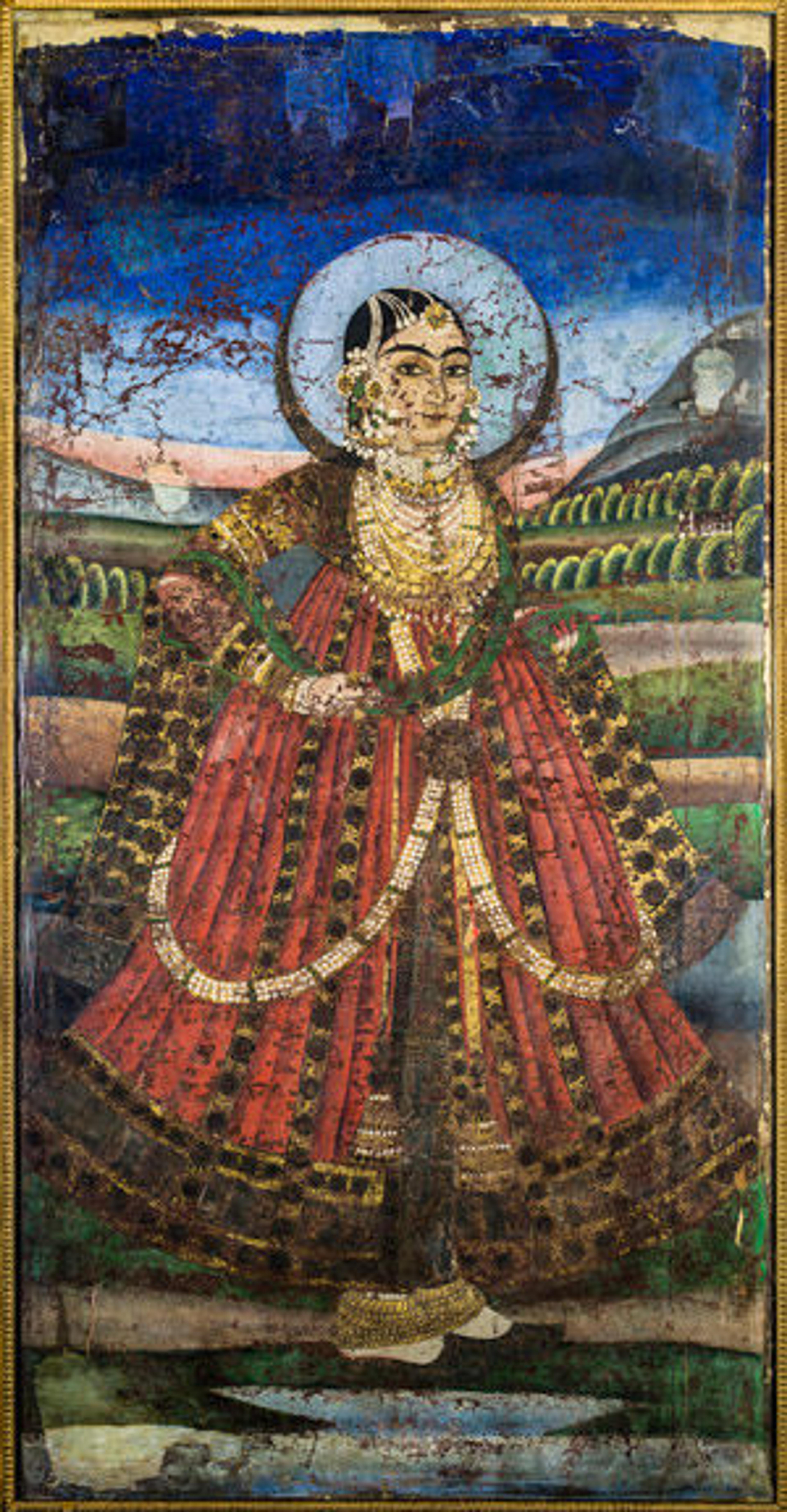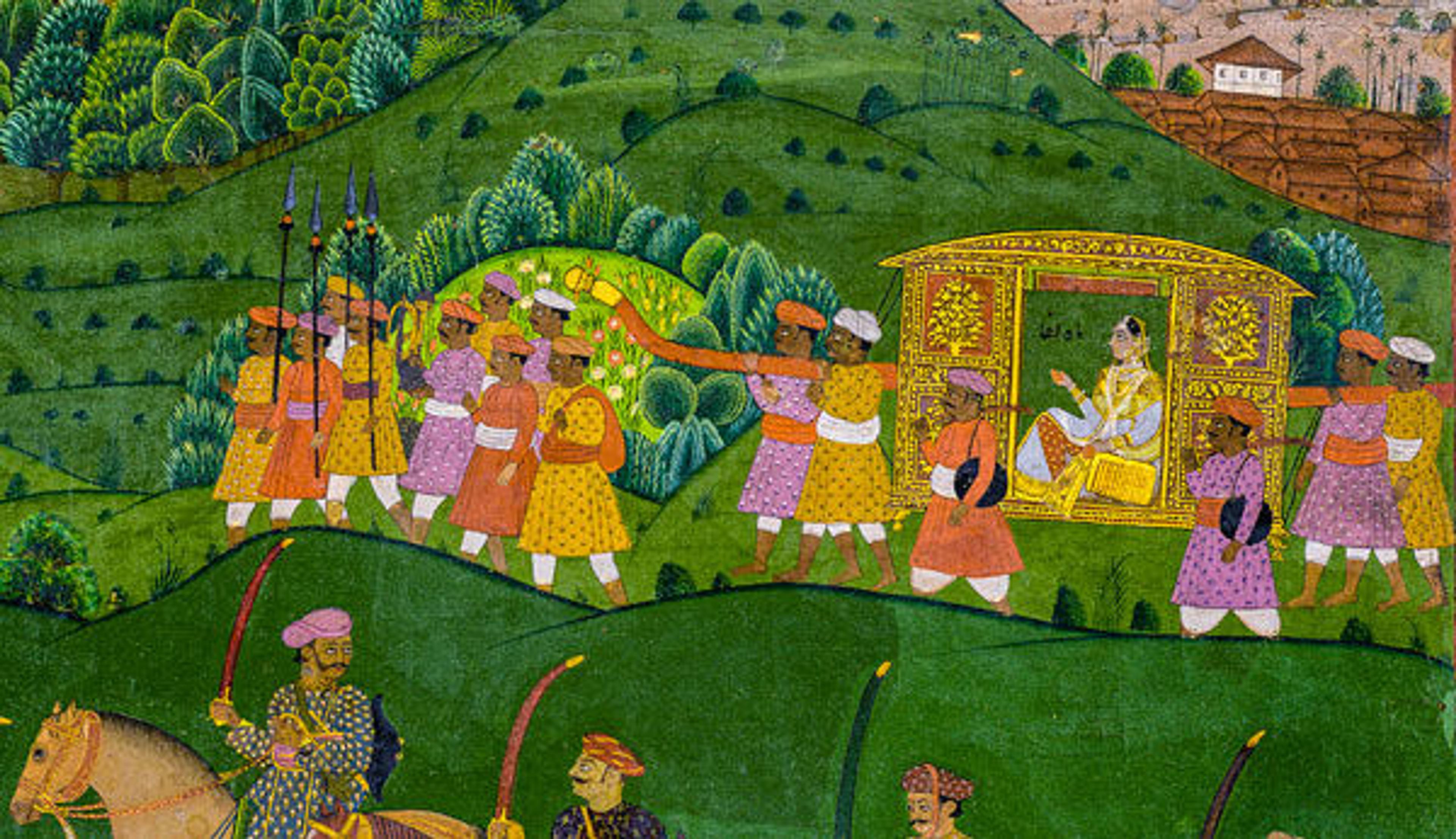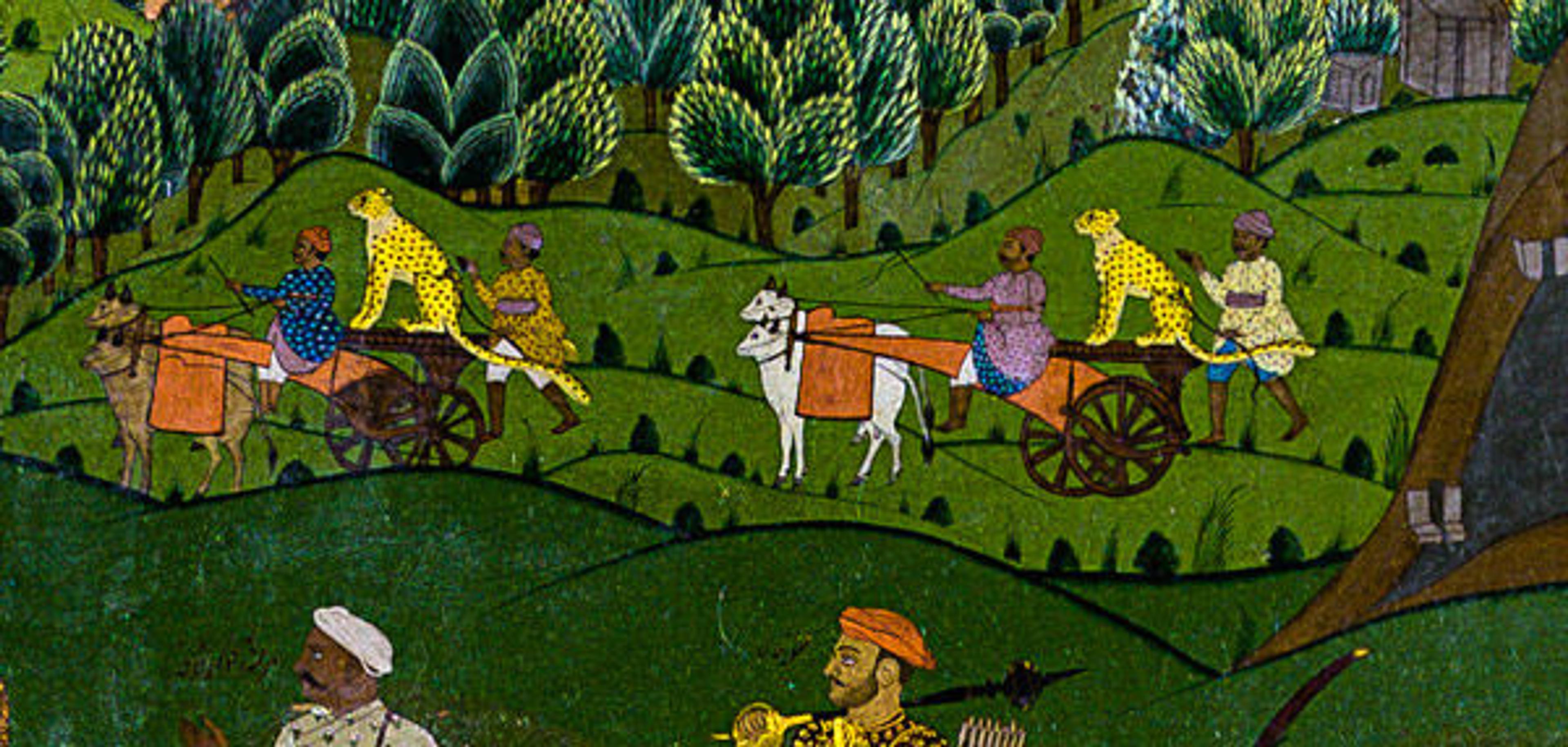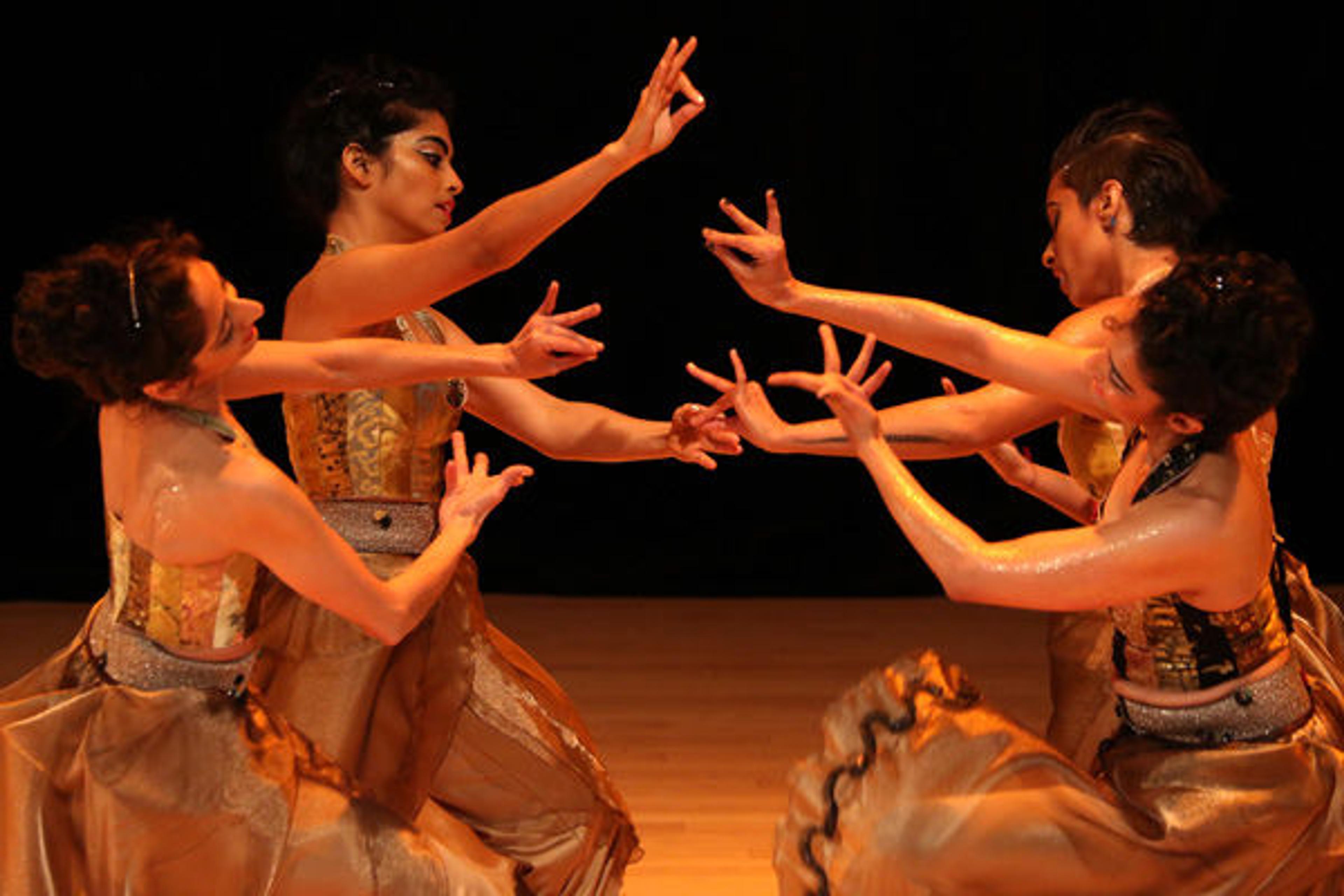Feminine Power of the Deccan: Chand Bibi and Mah Laqa Bai Chanda
«Though the recently opened exhibition Sultans of Deccan India, 1500–1700: Opulence and Fantasy focuses mainly on the sultans of south-central India, art history reveals to us that the Deccan world was also notable for its strong female characters. Two stand out among them as particularly remarkable: Chand Bibi, the sixteenth-century queen of Ahmadnagar; and Mah Laqa Bai Chanda, the eighteenth-century poetess of Hyderabad.»

Left: Chand Bibi Hawking with Attendants in a Landscape, ca. 1700. India. Islamic. Opaque watercolors, gold, and silver on card-weight paper; 10 x 6 1/4 in. (25.4 x 15.9 cm). The Metropolitan Museum of Art, New York, Louis E. and Theresa S. Seley Purchase Fund for Islamic Art, 1999 (1999.403)
Images from the Deccan of a female figure hawking, such as this one, are identified as idealizations of the historical figure Chand Bibi (1550–1600), who was one of the most intelligent, influential, and strategic military leaders of her era. Her life and social circle include many of the sultans and other notable historic figures featured in the exhibition.
Chand Bibi was the daughter of Sultan Husain Nizam Shah I of Ahmadnagar (r. 1553–1565). To create a political alliance, Chand Bibi was married to Sultan Ali Adil Shah I (r. 1558–1580) of Bijapur. After the assassination of her husband, Chand Bibi aided in the administration of the Bijapur sultanate, carefully guiding the young heir, Ibrahim Adil Shah II (r. 1580–1627), who had inherited the throne at the age of nine. For a short time, Chand Bibi herself even served as the Regent of Bijapur.
She later returned to her home in Ahmadnagar and continued to advise her young nephews, the rulers of Ahmadnagar, during complex, war-torn times. Again she found herself in a position of regent, and her grace under pressure, fearlessness in the midst of battle, and regal influence led her to gain the title of Chand Sultana.
Chand Bibi's image became a popular subject in both Deccani and Mughal painting. She is usually depicted hawking—an activity pursued by princes and sultans, rather than women. As seen in the artwork above, she rides a white horse whose lower half has been colored red with henna, possibly to symbolize wading through blood or bravery demonstrated in battle. One of her attendants carries a ceremonial sunshade, which not only indicates Chand Bibi's regal status but also doubles as a halo, highlighting the remarkable nature of this extraordinary woman.

Right: Portrait of Mah Laqa Bai Chanda, ca. 1800. Hyderabad. Hyderabad Archaeological Museum. Photograph courtesy of Antonio Martinelli
Like Chand Bibi, the poetess and courtesan Mah Laqa Bai Chanda (1768–1824) also served as an important advisor to the royal court.
Chanda entered court life as a dancer, performing song and dance for the aristocratic public. She caught the attention of influential powers and, in 1803, Mir Nizam 'Ali Khan (r. 1762–1803) bestowed upon her the court title Mah Laqa Bai, which translates to "Madame Moon Cheek."
She quickly made her talents invaluable, serving as courtesan in the sense that she had a respected presence at the royal court. In addition to being a dancer, she was a celebrated poet as well as a patron of the arts. With her considerable influence and wealth, Mah Laqa Bai Chanda commissioned the construction of a library filled with books on the arts and sciences, and sponsored poems and texts, including the creation of the Mahanama, a history of the Deccan.
The painting below by Rai Venkatchallam, in the collection of the Salar Jung Museum, shows her extraordinary presence—the only female in a landscape of men, a crowd with which she was perfectly comfortable. Mah Laqa Bai can be seen in her palanquin at the upper right of the painting.

Rai Ventkatchallam. Hunting Party of Nizam 'Ali Khan, late 18th century. Opaque watercolor on canvas. Salar Jung Museum, Hyderabad. Photograph courtesy of Antonio Martinelli
Nizam 'Ali Khan relied heavily on the wisdom of Mah Laqa Bai for official matters such as state policy, and she was also given the rank of senior omrah. This status granted her land, honorary guards, a noble's palanquin, and drummers to announce her arrival.

She even traveled with a pair of cheetahs:

Her presence in a hunting scene also references her own skill with a bow and arrow, as well as hunting. Though renowned for her beauty and femininity, Mah Laqa Bai also bravely accompanied the Nizams in battle while dressed in male clothing.
Mah Laqa Bai Chanda's influence continues to live on. Her poems are published in many languages and her life and accomplishments have inspired many artistic works, including a recent contemporary dance performance, Veiled Moon, by Preeti Vasudevan's company Thresh, as part of a recent Sunday at the Met program. A combination of contemporary and classical styles, Veiled Moon alludes to the sensuality of the life of Mah Laqa Bai Chanda as well as her renowned skill as a dancer.

Thresh perform Veiled Moon at The Metropolitan Museum of Art, April 2015. Photography courtesy of Tanya Ahmed
For more programs related to Sultans of Deccan India, 1500–1700: Opulence and Fantasy, see the event calendar.
Courtney Stewart
Courtney A. Stewart is the senior research assistant in the Department of Islamic Art.